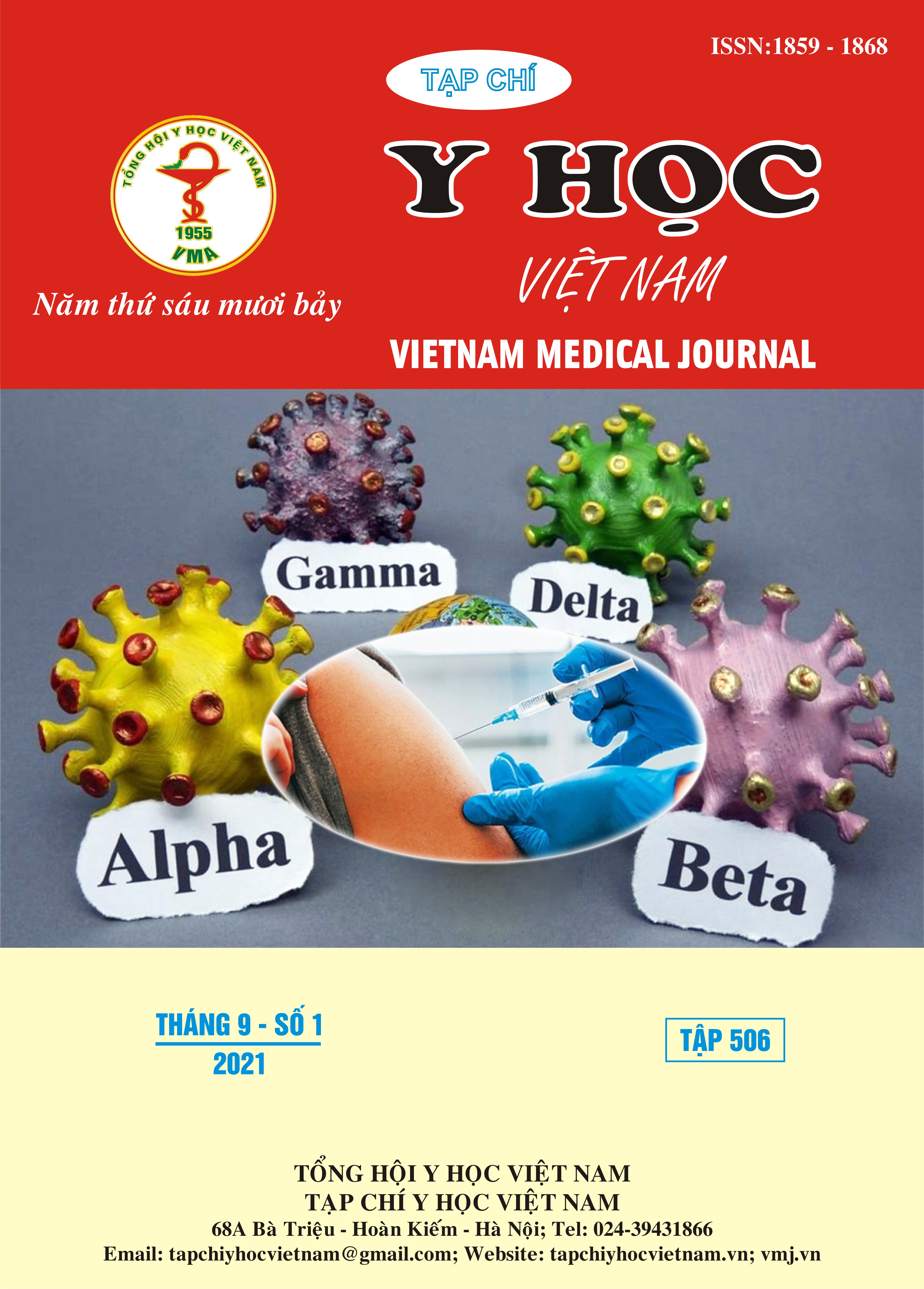A CASE REPORT: USING INFERIOR TURBINATE FLAP FOR RECONSTRUCTION OF ANTERIOR SKULL BASE DEFECT
Main Article Content
Abstract
Introduce: Anterior skull base tumors which invade brain or nasal septum. After removing total tumor will cause large skull base defect. So, reconstruction of skull base defect is difficult. In this case, we use inferior turbinate flap with vascular pedicle. Methods: A case report which have tumor in his nose at Cho Ray hospital. The tumor invade into brain and nasal septum. Skull base defect was occurd after removing skull base tumor. His nasal septum did not exist because the tumor invade nasal septum. Then, we used inferior turbinate flap with vascular pedicle to cover skull base defect in his nose. Results: A patient have tumor in his nose. Result of pathology is squamous carcinoma. This tumor invades anterior skull base and brain. Beside, it destroys his nasal septum. We operated this case with expanded endoscopic sinus surgery. We reconstructed anterior skull base defect by multiple layers. And the inferior turbinate flap was used in this case because his nasal septum is destroyed by tumor. The result of surgery is successful. Conclusion: Using inferior turbinate flap to help a successful reconstruction of anterior skull defect. It is important in a process of skull base reconstruction. It is a flap which can is changed flap when nasoseptal flap is unavailable. The inferior turbinate flap is also flexible, easy using and vascular pedicle.
Article Details
Keywords
skull base reconstruction, inferior turbinate flap with pedicle
References
2. Hegazy HM, Carrau RL, Snyderman CH, Kassam A, Zweig J: Transnasal endoscopic repair of cerebrospinal fluid rhinorrhea: a meta-analysis. Laryngoscope 2000, 110:1166–1172.
3. Harvey RJ, Nogueira JF, Schlosser RJ, Patel SJ, Vellutini E, Stamm AC: Closure of large skull base defects after endoscopic trans-nasal craniotomy, Clinical article. J Neurosurg 2009, 111:371–379.
4. Zanation AM, Carrau RL, Snyderman CH, Germanwala AV, Gardner PA, Prevedello DM, Kassam AB: Nasoseptal flap reconstruction of high flow intraoperative cerebral spinal fluid leaks during endoscopic skull base surgery. Am J Rhinol Allergy 2009, 23:518–521.
5. Fortes FS, Carrau RL, Snyderman CH, Prevedello D, Vescan A, Mintz A, Gardner P, Kassam AB: The posterior pedicle inferior turbinate flap: a new vascularized flap for skull base reconstruction. Laryngoscope 2007, 117:1329–1332.
6. Patel MR, Stadler ME, Snyderman CH, Carrau RL, Kassam AB, Germanwala AV, Gardner P, Zanation AM: How to choose? Endoscopic skull base reconstructive options and limitations. Skull Base 2010, 20:397–404.
7. Masing H, Gammert C, Jaumann MP: Our concept concerning treatment of septal perforations. Laryngol Rhinol Otol 1980, 59:50–56.
8. Lee DH, Yoon TM, Lee JK, OO YE, Kim IY, Jang WY, Moon KS, Jung S, Lim SC: Clinical utility of the inferior turbinate flaps in the reconstruction of the nasal septum and skull base. J Craniofac Surg 2012, 23:e322–e326.
9. Harvey RJ, Sheahan PO, Schlosser RJ: Inferior turbinate pedicle flap for endoscopic skull base defect repair. Am J Rhinol Allergy 2009, 23:522–526.
10. Gil Z, Margalit N: Anteriorly based inferior turbinate flap for endoscopic skull base reconstruction. Otolaryngol Head Neck Surg 2012, 146:842–847


